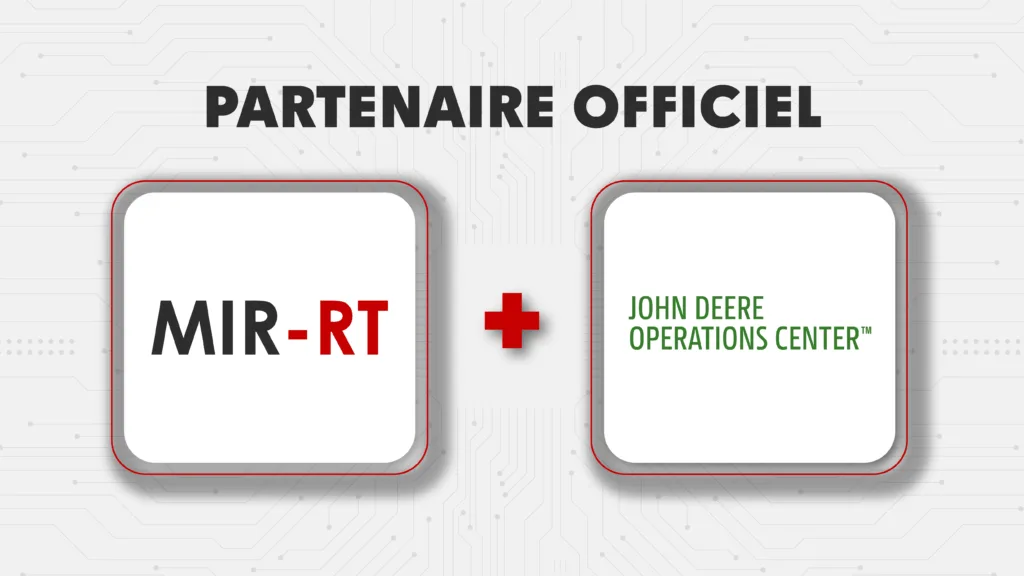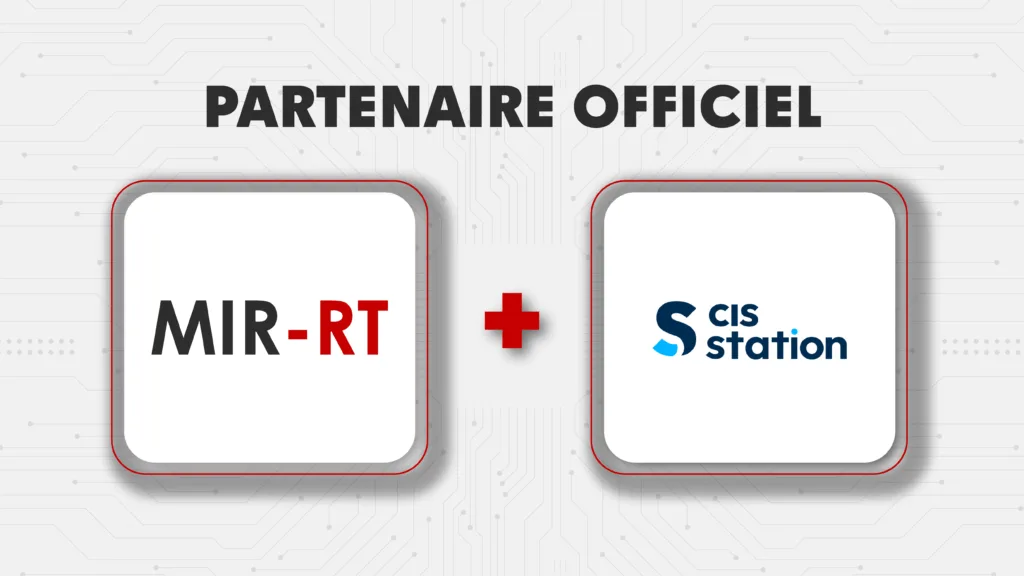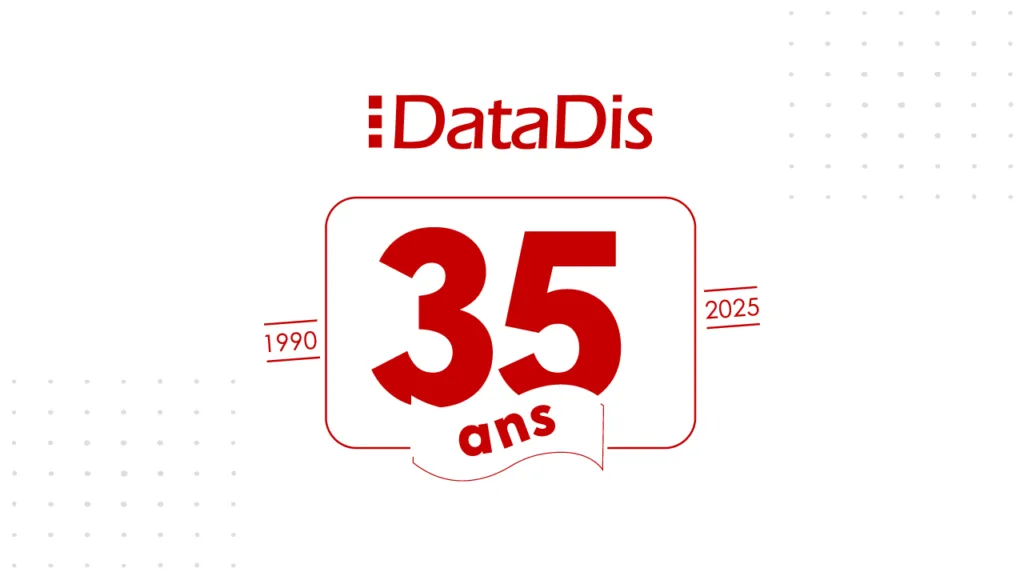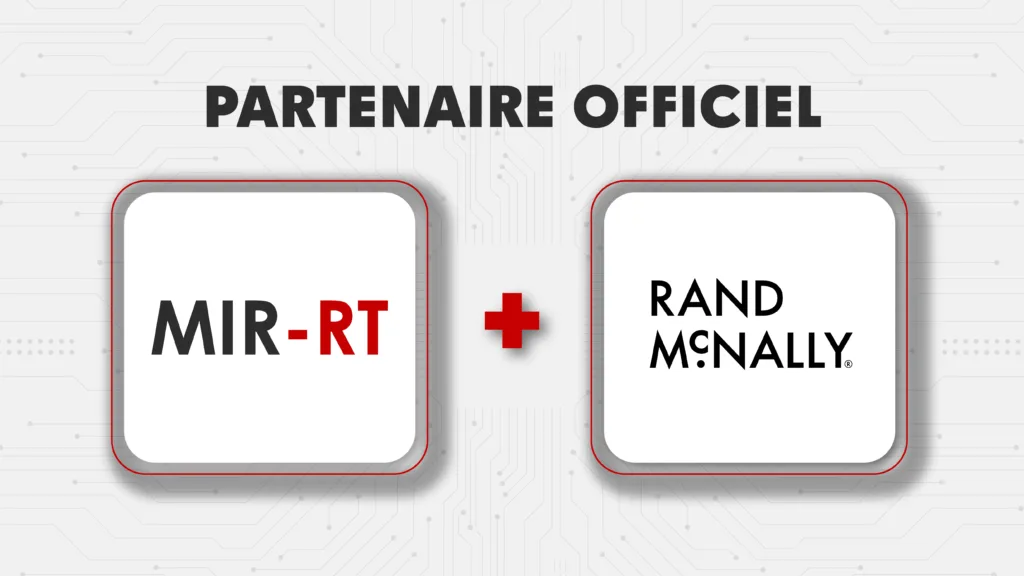Mechanic work orders are a core part of fleet maintenance. Improving the work order process in your company will greatly improve the efficiency of your fleet’s maintenance efforts. As part of their job, fleet maintenance managers should consider different ways to optimize their management at their company.
In this guide, we will explain what a mechanic work order is, outline the process and describe what a good work order template should include, as well as discuss the importance of having a work order management software.
What is a Mechanic Work Order?
Un bon de travail mécanique est un document (papier ou numérique) qui intègre toutes les données importantes concernant une tâche de maintenance. Il décrira également le processus nécessaire pour terminer le travail. Ils comprendront des informations telles que :
- Overall information on the job’s scope
- The repair date
- Who has authorized it
- Which mechanic is working on it
- The unit number
- The work order type (internal or external)
- What parts are being used
Work orders assist mechanics and maintenance managers in organizing, prioritizing, completing, and tracking the jobs they are doing. Once the work orders are completed, they will be saved and analyzed if needed to improve efficiencies. Mechanic work orders are at the center of your fleet maintenance operations. They drive your maintenance team and help fleet managers better plan the workload for the upcoming weeks. That is why it is very important to have the right tool to help achieve efficient and proactive work order management.
A good work order management system should include a dashboard to help fleet maintenance managers get an overview of important information regarding work orders.
The work order dashboard should include information such as:
- Number of open work orders
- Number of work orders under repair
- Number of work orders waiting for parts
- Number of work orders waiting for authorization
- Number of work orders completed
- Number of work orders per type (internal vs external)
- Average time to complete a work order
- Average time to close a work order
Le tableau de bord des bons de travail devrait également vous permettre de filtrer les informations par succursale pour une période spécifique ou pour une plage horaire.
What is the Work Order Management Process With a CMMS Software ?
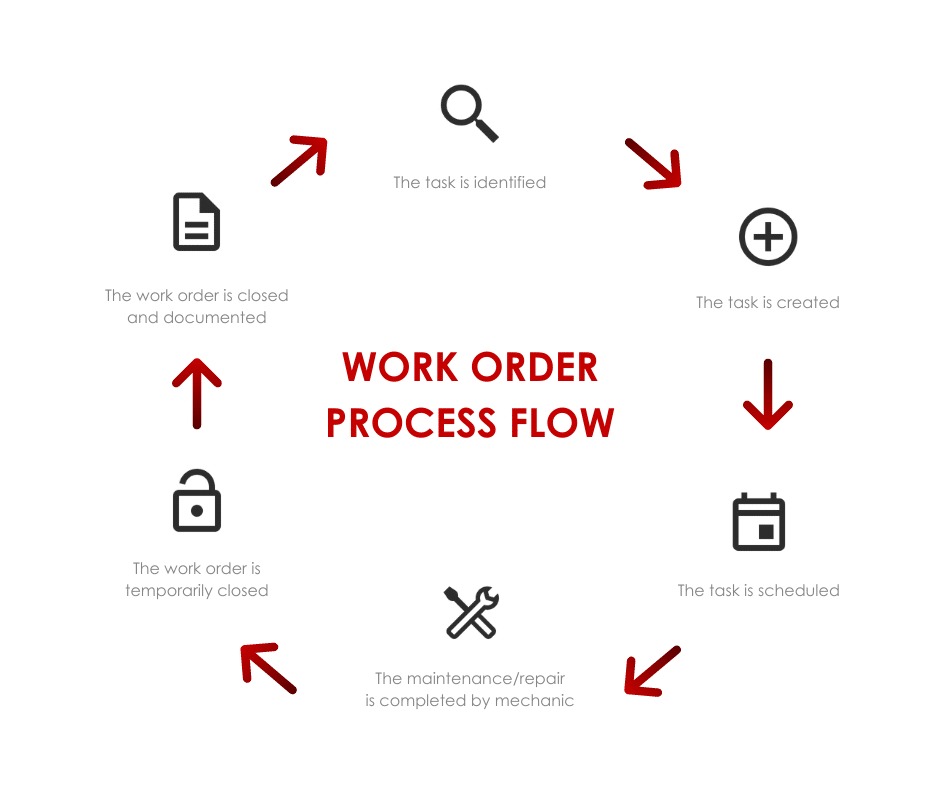
Step 1. The Task is Identified
There are 2 types of tasks that can be done, preventive (maintenance) or corrective (repair). A preventive maintenance task (PM Work Order) will be planned per difference frequency (odometer, hours, calendar, etc) to follow the government regulations, while a corrective task (Repair Work Order) would be an unplanned repair that needs to be done on a tractor, trailer or equipment. At this stage, your maintenance team will assess what exactly needs to be done and on which unit.
Step 2. The Task is Created
The right information is put on a repair or maintenance request in the system. It is recommended to use VMRS codes or vehicle maintenance reporting standards. These industry-standard codes will detail the reason why you are completing this task as well as what you are working on. For example, your reason could be preventive maintenance (PM) and your repair could be on the brakes (013). These codes will also be used to run reports. Once that is done, that repair or maintenance request will automatically go to your preventive and corrective maintenance planning board. The planning board is where all your repair and maintenance requests for your team will be located. It will act as your whiteboard, your “to-do list”.
Step 3. The Task is Scheduled
Now that the repair or maintenance request is on the planning board, it is ready to be planned. It can be planned with a simple drag and drop to your in-house mechanic or to an external service supplier (external WO or PO). You can also plan tasks for your mobile repair units on the road. If the task is an unplanned repair, it can simply be manually entered in the fleet work order system by the mechanic.
Step 4. The Task is Completed by a Mechanic
La tâche de réparation ou d’entretien sera effectuée par vos mécaniciens. Ils devront simplement se connecter au système avec une puce RFID, cliquer sur la tâche qu’ils souhaitent accomplir et commencer leur travail. Cliquer sur une tâche ouvrira automatiquement un nouveau bon de travail et commencera à calculer le temps d’achèvement de cette tâche. Ils peuvent revenir quand ils en ont besoin s’ils souhaitent ajouter des pièces au bon de travail. Une bonne pratique serait d’utiliser un système de codes à barres, qui vous fournit un système de gestion des stocks en temps réel. Il permet à vos mécaniciens de mettre rapidement une pièce sur un bon de travail en la scannant et en la retirant automatiquement de l’inventaire. Ils peuvent ajouter des commentaires et des notes de correction au bon de travail du mécanicien avant de commencer un autre travail.
Step 5. The Work Order is Temporarily Closed
Une fois la tâche terminée, le mécanicien devra simplement cliquer sur une nouvelle tâche, ce qui fermera temporairement le bon de travail (en attente de révision) et arrêtera le temps pour cette tâche spécifique. Cela ouvrira également un nouveau bon de travail pour la nouvelle tâche et commencera à calculer le temps pour effectuer la tâche. Cela vous fournira une automatisation complète du processus de gestion du bon de travail.
Step 6. The Work Order is Closed and Documented
After completion, a foreman or supervisor will review and approve all work orders done that day to make sure there are no errors that the mechanic didn’t see. Every work order will not only be saved automatically in the system, but will also be attached to the unit in question for an easy and quick subsequent consultation via the work order history.
What information Should be Included on a Mechanic Work Order?
Un bon de travail mécanique doit inclure les informations suivantes :
- Unit number: What tractor, truck, trailer or equipment will be worked on?
- Work order type: Is it an internal or external work order?
- Name of mechanic performing job: Who is completing this job?
- VMRS codes: What are the reason and repair codes?
- Branch name: What branch does the unit belong to?
- Description of problem: What exactly happened to the unit?
- Summary of work: What is the mechanic doing on the unit?
- Dates: When it was created, when it was closed?
- Parts used: What parts did the mechanic use?
- Attached documents: Any related important documents should be attached to the work order.
- Detailed costs list: What was the cost of the labour? Of the parts?
Here’s an example of a paper mechanic work order:
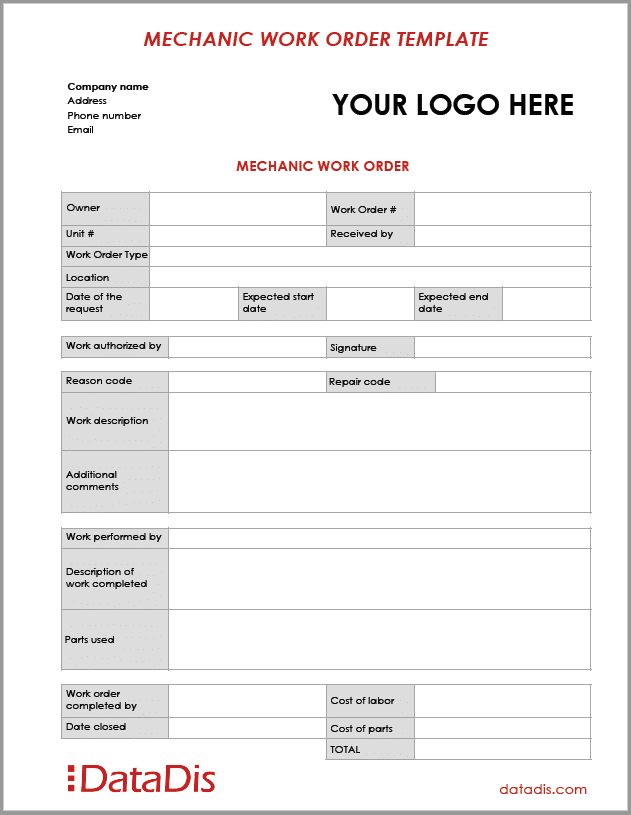
Download our free customizable Excel Heavy Vehicle Mechanic Work Order Template !

The Importance of Having a Fleet Maintenance Work Order Management Software
L’utilisation d’un système papier pour la gestion des bons de travail devrait appartenir au passé. Imaginez que vos mécaniciens saisissent manuellement toutes les informations, puis que le gestionnaire de flotte doit essayer de comprendre ce que le mécanicien a écrit (était-ce un 4 ou un 9 ?), puis qu’il remplisse les bons de travail une fois terminés. Tout ce processus peut être un véritable cauchemar lorsque vous devez trouver rapidement des informations pour l’équipe de direction.
Here’s an example of a digital work order:
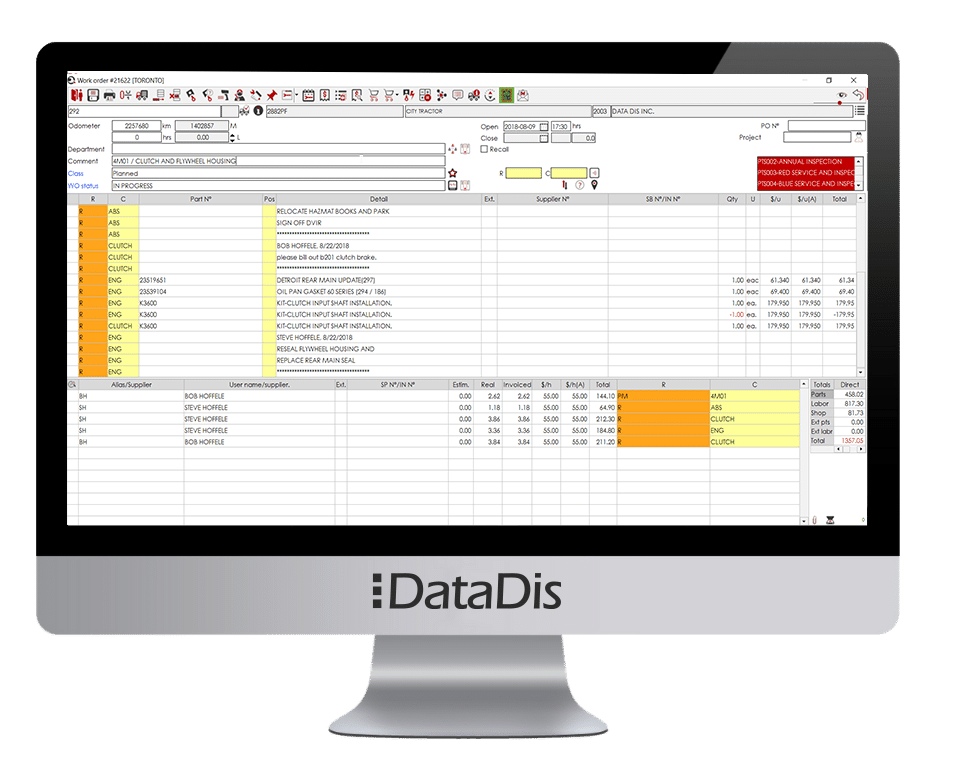
In order to be truly efficient, you need a solid work order management software in place to manage those work orders properly. It will not only organize your work orders, but will also automate them and bring your maintenance management to the next level. Having a good system in place will help your organization decrease your downtime, lower your fleet maintenance and repair costs as well as increase overall efficiency. All this while allowing you to obtain a very interesting return on investment (ROI).
Conclusion
Les bons de travail sont la base d’une bonne gestion des entretiens de votre flotte. Bien gérés, ils apportent stabilité, structure et efficacité à votre équipe. Avoir un bon système de gestion des bons de travail avec tous les bons composants facilitera la création d’un programme d’entretien préventif.
Choosing the right software to help you with your work order management is crucial to assist you and your team in becoming the most profitable you can be. With the right tools, your fleet maintenance operation team will give your organization an edge over your competition who have not yet switched to an automated digital work order system.







